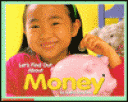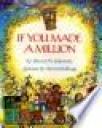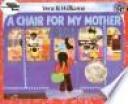Introduction:
The resources that are listed below are great examples of materials that can be used in a second grade classroom for a unit on money. The topics range from counting coin values, to addition and subtraction of monetary values, and comparing monetary values. Included below are books that can be used in the classroom, places to find printable materials, and other sites where students can practice their money skills.
Text Annotations
1. Let’s Find Out About Money by Kathy Barabas, illustrations by David Swann
This book about money and the U.S. Mint captivates children’s curiosity about where money comes from. It shows the reader the process of making money and the texts and photographers are extremely realistic.
2. Matthew and the Midnight Money Van by Allen Morgan, illustrations by Michael Martchenko
This story is about a boy named Matthew who is looking for Mother’s Day gift for his mom when one night the Midnight Money Van shows up in a rainstorm of pennies. The man who drives the van offers to give Matthew some of the money if he helps clean up the mess. Matthew agrees and he ends up on an adventure looking for gifts to buy for his mom at the Midnight Mall.
3. If You Made a Million by David Schwartz, illustrated by Steven Kellogg
This story is a follow up to the book How Much is a Million, and explores the idea of accomplishing odd jobs and tasks in order to earn payment. The more in depth topics such as spending and saving and the history of money itself are contrasted with the silly illustrations by Kellogg. However, the real question being answered is how much does one million dollars look like and what would it be spent on.
4. A Chair for my Mother by Vera Williams
A young girl explains how in her home is a big glass jar where her mother places all the coins that she receives in tips and her grandmother places all of her savings from a day at the market. The money in this jar is going to be spent on a beautiful armchair because the rest of their furniture burned up in a fire. When the jar is full, the family rolls the coins in wrappers and exchanges them for bills before heading out on their shopping trip.
5. My Rows and Piles of Coins by Tololwa Mollel, illustrated by E.B. Lewis
Saruni is a little boy who wants to buy a bicycle to help his mother carry food back and forth from the marketplace. He works for his mother in the marketplace and saves his money for a long time. This book touches on the savings of money and goal- setting. Young children will be able to identify with the main character and his wish to own something of such high value, like a bicycle.
Web Annotations
- Piggy Bank – This game gives the students the sale price and the amount of money paid for the imaginary item. The students then must fill in how many dollar bills, quarters, dimes, nickels, and pennies the person would receive back in change. At the beginning of the game the student can choose the difficulty level and the country's currency that they would be using.
- Create- A- Coin – This game allows students to create their own coin. He or she can design what letter they want the coin to have on it, what picture is in the middle of the coin, the shape of the coin, and the lettering inside the coin. The student only has to click and drag the tools for making the coin onto the workspace.
- Coin Quiz – This website gives students two different examples of coins and the student has to choose which amount of coins matches the amount given to the student in number form. The pictures on the site are of real coins and are colored either silver or bronze. If the student answers the question correctly another question pops up but if they answer wrong they have the opportunity to do the problem again.
- Matching Number Value to Word Value – This interactive website displays 16 boxes, half with a written number value such as $.31 and half with the written word value such as thirty- one cents. The directions ask the student to match the number value with the correct word value. When the student makes a correct match the two boxes are filled with another color to show that they have already been used. If the student does not make a correct match nothing happens at all. There are options on the side of the board that allow the student to change the size of the font in the boxes, to show the answers, and to restart the game.
- Falling Money – This is a colorful game that has students click on amounts of money as they fall from the top of the screen. The student is given a total amount of money and when the money figures fall, the students have to click on the numbers in order to add them up inside the piggy bank. When the student gathers enough money to match the amount given a new amount appears and the piggy bank on the side has a green line at the bottom indicating that the money is increasing in the bank.
Additional Resources
- Money Review Power Point – This is a downloadable power point that gives teachers a handful of review questions including amounts of money in picture form that the students must choose what number value it is, addition and subtraction of money amounts, and word problems containing amounts of money.
- Printable Money Templates – This is a link to multiple printable money templates that teachers can use in the classroom. The templates have pictures of real bills and coins and there are a handful of bills and coins on each sheet. If laminated, this money could be reused in the classroom.
- Money Worksheets – This is a great site for printable worksheets on coin addition, money words problems, and counting money. At the top of the page the site give the option to have the worksheets in U.S. dollars, British currency, or Euros. Each of the worksheets is just a page long and some of them are more difficult than others.




